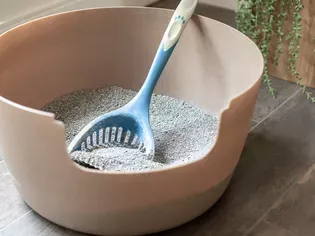The Best Way to Dispose of Cat Litter
Updated on 04/26/24

The Ultimate Guide to Cat Litter Disposal: Protecting the Environment and Your Cat's Health
Introduction
As responsible cat owners, ensuring the well-being of our feline companions and protecting the environment is paramount. A crucial aspect of cat care is disposing of cat litter responsibly. Improper disposal can pose health hazards to your cat, contaminate landfills, and harm wildlife. This comprehensive guide will empower you with the knowledge and practical tips on the best ways to dispose of cat litter, safeguarding your cat's health and the environment.
Understanding Cat Litter
Before exploring disposal methods, let's delve into the types of cat litter available:
* Clay Litter: The most common type, clay litter is highly absorbent and forms clumps when wet.
* Pine Litter: Made from dried pine shavings, pine litter is biodegradable but can generate dust.
* Walnut Shell Litter: A natural option, walnut shell litter is lightweight, absorbent, and flushable.
* Silica Gel Litter: A crystal-based litter, silica gel litter absorbs moisture effectively and controls odor.
Safe and Sustainable Disposal Methods
1. Landfill Disposal
* Regular Landfill: After wrapping the used litter in a plastic bag or newspaper, discard it in your regular household trash.
* Pet Waste Landfill: Some cities offer designated landfills for pet waste, where cat litter can be disposed of safely.
2. Composting
* Outdoor Compost Bin: If you have a compost bin in your backyard, certain types of cat litter, such as pine litter or biodegradable litter, can be composted. Avoid composting clay litter as it doesn't decompose easily.
* Vermicomposting: Using red wriggler worms to break down organic matter, vermicomposting can process clay litter. However, ensure the litter is free of feces and urine.
3. Flushing
* Flushable Cat Litter: Specially designed flushable cat litter, such as walnut shell litter, can be disposed of directly down the toilet. Follow the manufacturer's instructions carefully.
* Non-Flushable Cat Litter: Never flush non-flushable cat litter down the toilet as it can clog plumbing and damage sewage systems.
4. Other Disposal Options
* Burial: Dig a shallow hole in your yard (at least 6 inches deep) and bury the used litter. Cover it with soil and avoid burying large quantities in one spot.
* Incineration: In areas with incineration facilities, used cat litter can be incinerated. Contact your local waste management authority for information.
Tips for Proper Disposal
* Scoop Regularly: Remove solid waste from the litter box daily to minimize odors and prevent bacteria buildup.
* Change Litter Frequently: Replace the entire litter every week or two to maintain hygiene and prevent litter from becoming saturated with urine and feces.
* Use Biodegradable or Flushable Litter: Choose litter that is environmentally friendly and easy to dispose of.
* Avoid Overfilling the Litter Box: Keep the litter level in the litter box at a reasonable depth to facilitate easy scooping and prevent litter from spilling.
* Keep Litter Away from Water Sources: Prevent contamination by storing litter away from drains, water bodies, and wells.
* Educate Others: Share this knowledge with other cat owners to promote responsible disposal practices within the community.
Conclusion
Disposing of cat litter responsibly is not only essential for the health of your cat but also for the well-being of the environment. By following the tips outlined in this guide, you can effectively manage cat litter waste, protect your furry friend, and contribute to a cleaner, healthier planet. Remember, every responsible action, no matter how small, makes a difference. Embrace these best practices and become an exemplary steward of both your cat and the environment.
Explore More Pets

Cat Behavior Problems
How to Stop Aggression in Kittens

Long-Haired Cat Breeds
Siberian Cat: Breed Profile, Characteristics, & Care

Cat Behavior Problems
How to Stop Kittens From Scratching and Biting

Long-Haired Cat Breeds
Turkish Angora: Cat Breed Profile, Characteristics & Care

Basic Training
How to Socialize Your Kitten

Short-Haired Cat Breeds
Cute Pictures & Facts About Calico Cats & Kittens

Litter Box Training
Training Your Kitten to Use the Litter Box

Long-Haired Cat Breeds
10 Fun Facts About White Cats